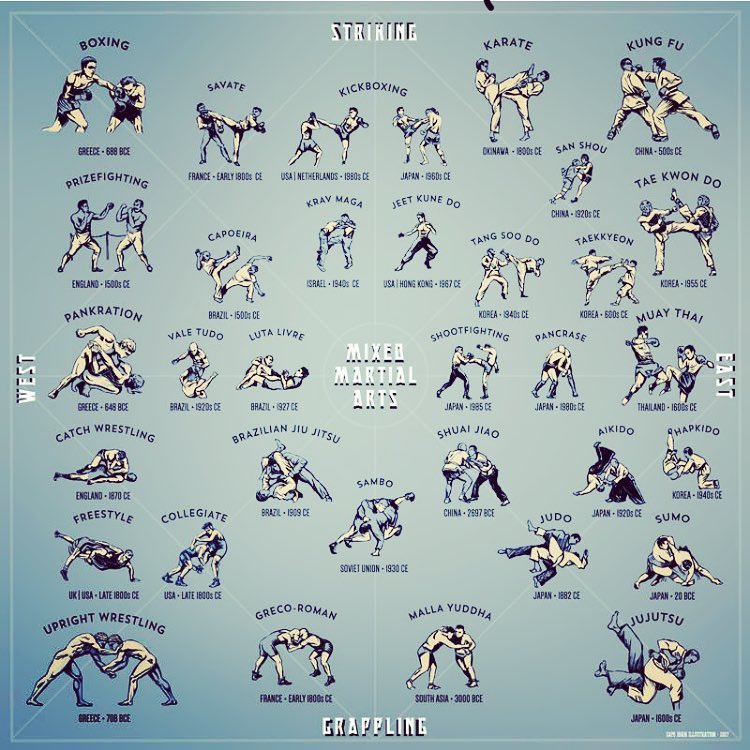Step Into The Fascinating Journey Of Martial Arts, Where Old Customs Ram Contemporary Methods, Disclosing Keys That Continue To Shape Today's Combat Culture
Step Into The Fascinating Journey Of Martial Arts, Where Old Customs Ram Contemporary Methods, Disclosing Keys That Continue To Shape Today's Combat Culture
Blog Article
Personnel Author-Egeberg Liu
Martial arts have a fascinating background that extends centuries and continents. You could find it appealing exactly how ancient practices like Shuai Jiao and Kalaripayattu laid the groundwork for modern battle techniques. These self-controls not only stress physical abilities yet additionally reflect the societies that birthed them. As you explore their development, consider exactly how globalization has actually transformed these standard types into crossbreed styles. What impacts do you think have formed today's martial arts landscape?
Ancient Martial arts: The Structures of Fight
As you explore the globe of ancient martial arts, you'll find the abundant foundations that shaped combat methods throughout cultures. Early techniques focused on Self-Defense and survival, commonly integrating strikes, grappling, and weaponry.
In old China, as an example, techniques like Shuai Jiao highlighted throws and joint locks, while India's Kalaripayattu showcased agility and fluid motion. Japanese samurai developed Kenjutsu, a polished swordsmanship that highlighted technique and method.
These martial arts offered not just for fight but also as a way of individual growth, instilling worths like regard and determination. The mixing of these methods gradually prepared for the diverse martial arts you see today, each showing the distinct ideologies and needs of its society.
The Social Impact on Martial Arts Development
While martial arts usually show the sensible needs of a culture, they also embody the social values and beliefs of their beginnings. When you discover different martial arts, you'll see exactly how they're affected by religion, philosophy, and social standards.
For instance, the focus on regard and discipline in Japanese martial arts stems from Zen Buddhism and samurai culture. In contrast, Brazilian Jiu-Jitsu promotes flexibility and strategy, formed by the requirement for performance in a varied, multicultural atmosphere.
You might find that the rituals, attires, and training methods show an area's history and identification. By understanding these cultural influences, you grow your appreciation of martial arts and their role fit human experiences across the globe.
Modern Adaptations and the Globalization of Martial arts
Martial arts have changed dramatically in current years, adapting to contemporary society and global impacts. what is martial art 'll discover that traditional forms have blended with modern strategies, producing hybrid styles like mixed martial arts. These adjustments deal with diverse audiences, making martial arts accessible and appealing around the world.
With Read Much more of social media sites and electronic platforms, you can find tutorials and competitors from all corners of the globe, breaking geographical barriers. This globalization has actually caused a shared recognition for numerous self-controls, from Brazilian Jiu-Jitsu to Taekwondo.
As you involve with these arts, you'll recognize they're not almost fight; they promote physical fitness, self-control, and psychological wellness.
Ultimately, modern-day adjustments have enriched the martial arts landscape, making it a dynamic and progressing method.
Conclusion
In discovering the background and advancement of martial arts, you discover an interesting mix of methods, societies, and approaches. From ancient techniques like Shuai Jiao and Kalaripayattu to the modern flexibility seen in mixed martial arts, martial arts reflect humanity's pursuit for Self-Defense and personal growth. As you involve with these techniques, you not just get skills however likewise a much deeper admiration for the varied practices that form our globe today. So, proceed your trip and accept the art of battle!
